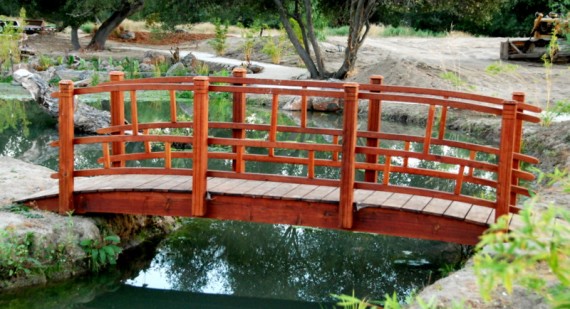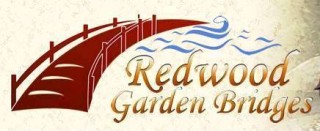(559) 325-2597
Garden Bridges Worlds Best in Design and Craftsmanship, Redwood Garden Bridges Redwood Characteristics

Characteristics of Redwood
Characteristics of Redwood Quality landscape architecture requires building materials that are beautiful and long-lasting. Materials need to withstand environmental elements yet retain their symmetry and aesthetic purpose. Redwood has a well-known reputation for meeting these requirements. Equally important, there are cost-effective redwood grades to specify for every project, whether it is a public plaza or a residential garden. Performance is more than durability. Redwood has qualities not found in other woods--even woods treated with chemicals. Redwood performance characteristics include resistance to shrinking, warping and checking in addition to durability. This means redwood projects age beautifully. Decks, fences and shelters made with redwood simply look better ten, fifteen and twenty years after construction.
Dimensional Stability
Dimensional Stability According to reports from the Forest Products Laboratory of the U.S. Department of Agriculture, redwood has less volumetric and tangential shrinkage than other common domestic softwoods. In exterior use, this means redwood stays flat and straight with minimal warping, cupping or checking.
Resistance to Decay and Insects
Resistance to Decay and Insects Redwood heartwood has grown-in resistance to decay and insects that is present throughout the lumber, not just on the surface. The wood exposed through sawing, boring or nailing is as decay-resistant as the surface. Finish Retention Redwood has an open-celled structure and contains little or no pitch or resins. This enables redwood to absorb and retain all types of finishes extremely well.
Redwood Provides Complete Performance
Redwood Provides Complete Performance Treating lumber with chemicals increases its decay resistance but doesn't improve other characteristics of the species. In many applications, other aspects of wood performance take precedence. For example, wood off the ground but exposed to harsh sunlight needs resistance to checking and warping. Beauty is usually the primary concern in highly visible applications such as decking surfaces, fences and overhead shelters. In most situations the wood's workability, finish retention or the absence of pitch and resins is important.
How to restore faded redwood
Redwood left unfinished or exposed to harsh elements over time may fade. Some homeowners prefer the distinct driftwood-gray that aging redwood can develop, while other may wish to restore the wood's warm red tones.
Most fading or discoloration due to sunlight or moisture can be easily remedied and the redwood restored to its original beauty. To remove extractive stains and restore a new appearance to weathered wood, follow these steps:
- Scrub wood with a bristle brush and a solution of one cup trisodium phosphate (TSP) and one cup of household bleach to a gallon of water. Gentle cleaners like Simple Green or laundry detergent can also be used. Allow to dry.
- Apply a solution of 4 ounces oxalic acid crystals dissolved in one gallon of warm water. Oxalic acid may also be available in liquid solutions.
- When wood dries, rinse thoroughly with water.
Click here for detailed restoration sheet






